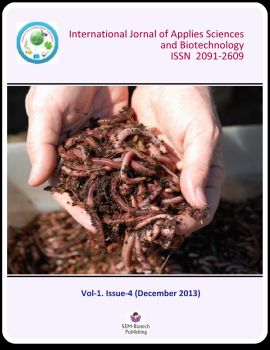Earthworm: A Natural Ecofriendly Organism for Recycling of Organic Residues and Improvement of Soil Health by Vermicompost
DOI:
https://doi.org/10.3126/ijasbt.v1i4.9130Keywords:
Agrochemicals, Earthworm, Rural economy, soil health, soil organic carbon, soil texture, Vermibed, water holding capacity, soil texture.Abstract
Vermicompost of agriculture waste is an important method in which organic waste such as leaves or stalks of agricultural field is converted into useful compost by means of worms is useful to the environment. Earthworm and microbes acts together and breaks down the complex organic matter of agricultural field and resulting material is rich in nutrients and oxygen. Composting is becoming an effective way to increase organic matter of soil. In addition to increasing organic matter of soil compost also increases soil microbial population (Pera et al., 1983; Perucci, 1990), which leads to the improvement of soil quality. The entire residues after crop is harvested must go back to the soil to replenish the lost nutrient, so vermicompost is considered as excellent way to recycling nutrient in the ecosystem. Soil organic carbon enhancement through crop residues recycling by means of vermicomposting along with fertilizers and integrated nutrient management (INM) are major option to improves soil health and crop productivity. The major objective to vermicomposting is that more ground water recharge and lesser depletion of water table as well as reduces soil salinity and less pollution by agrochemicals.
DOI: http://dx.doi.org/10.3126/ijasbt.v1i4.9130
Int J Appl Sci Biotechnol, Vol. 1(4): 171-175




